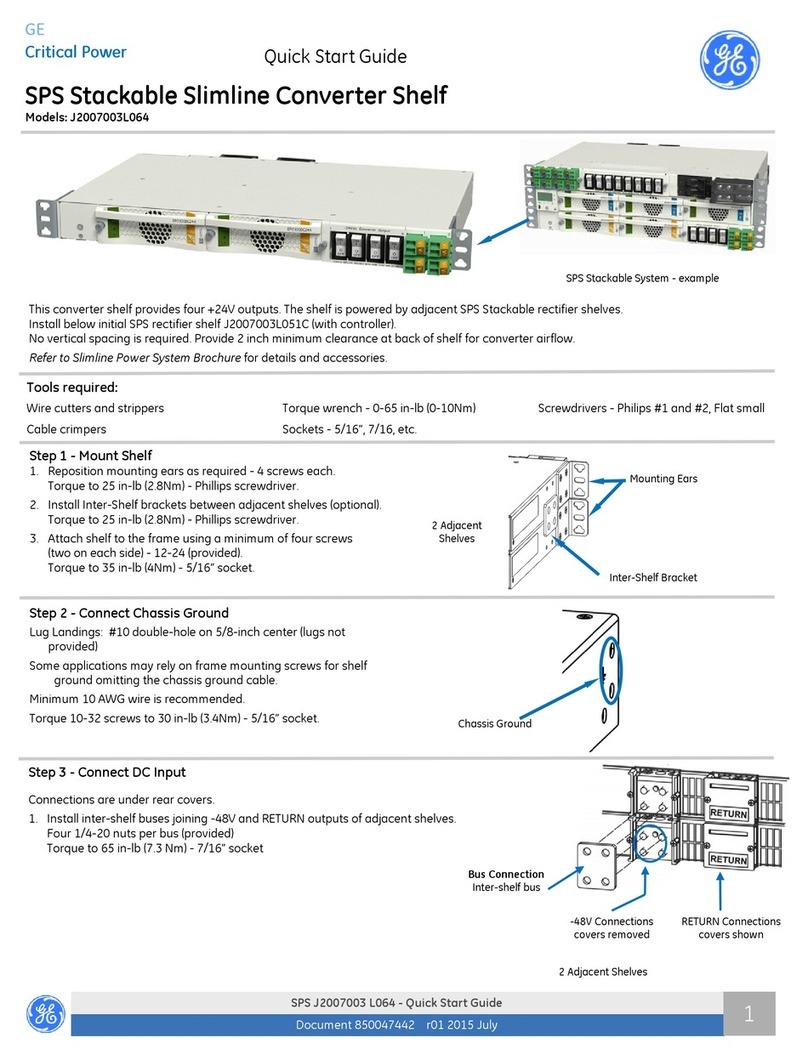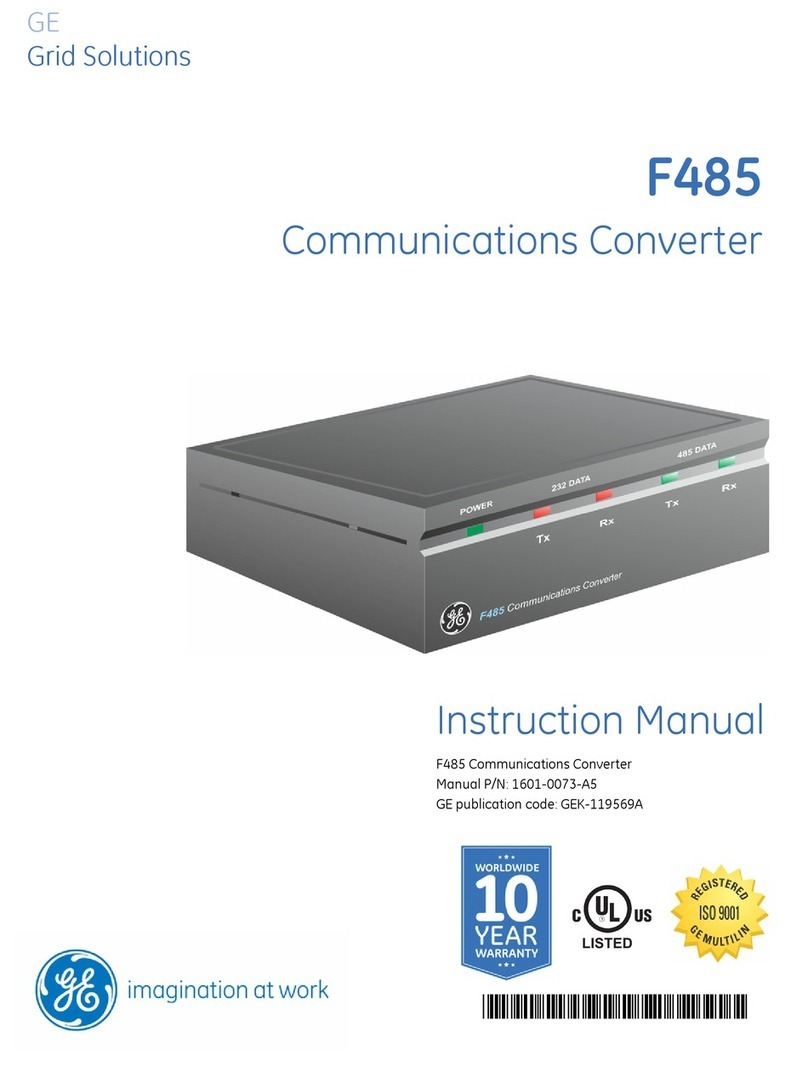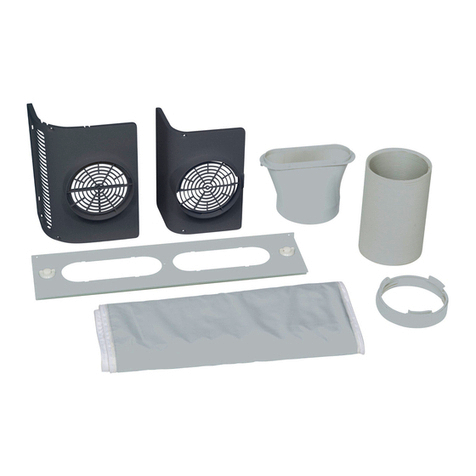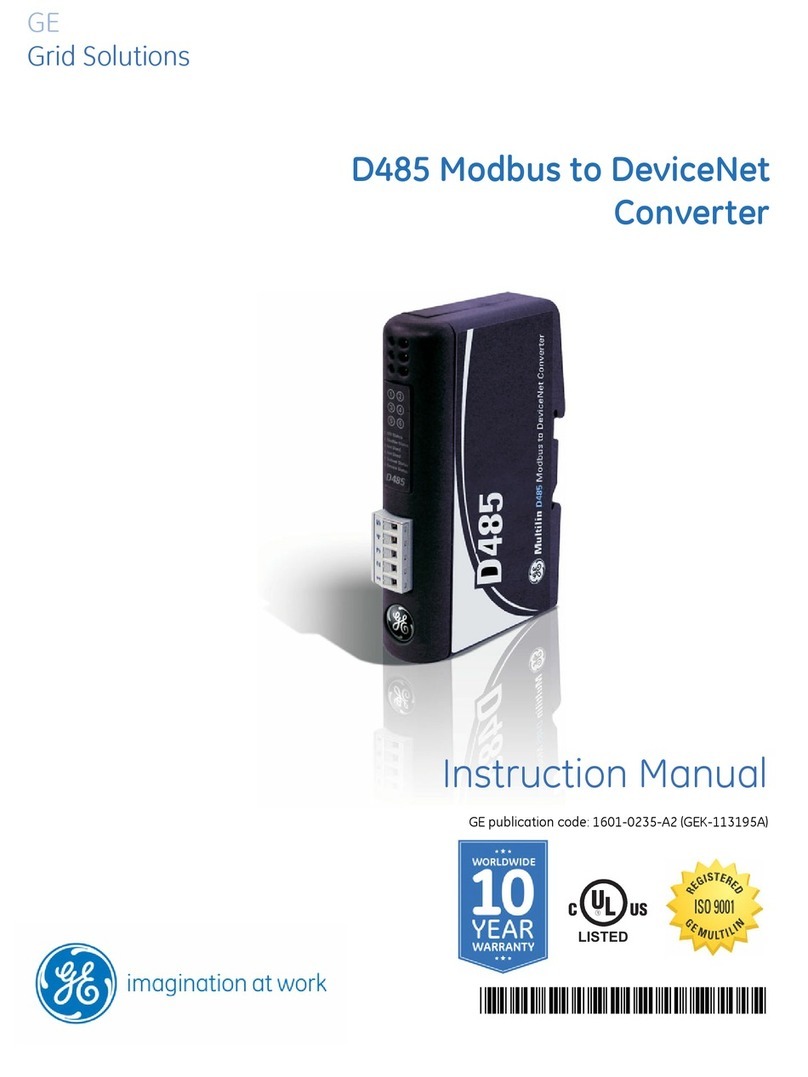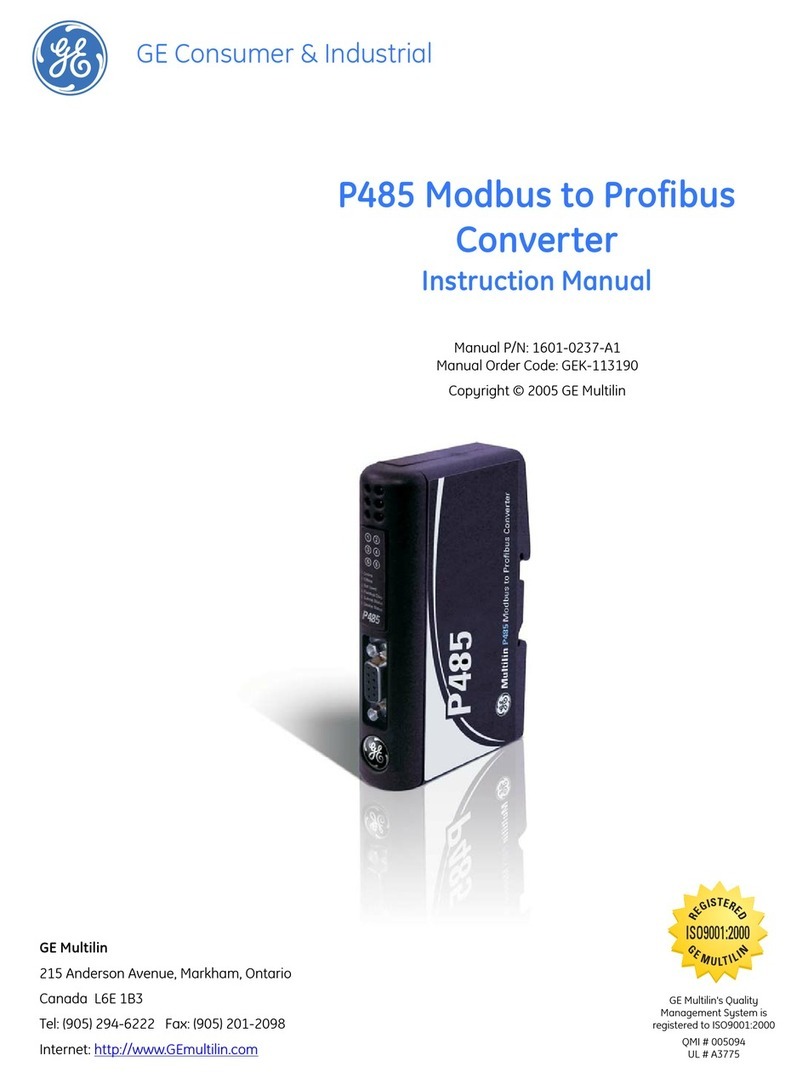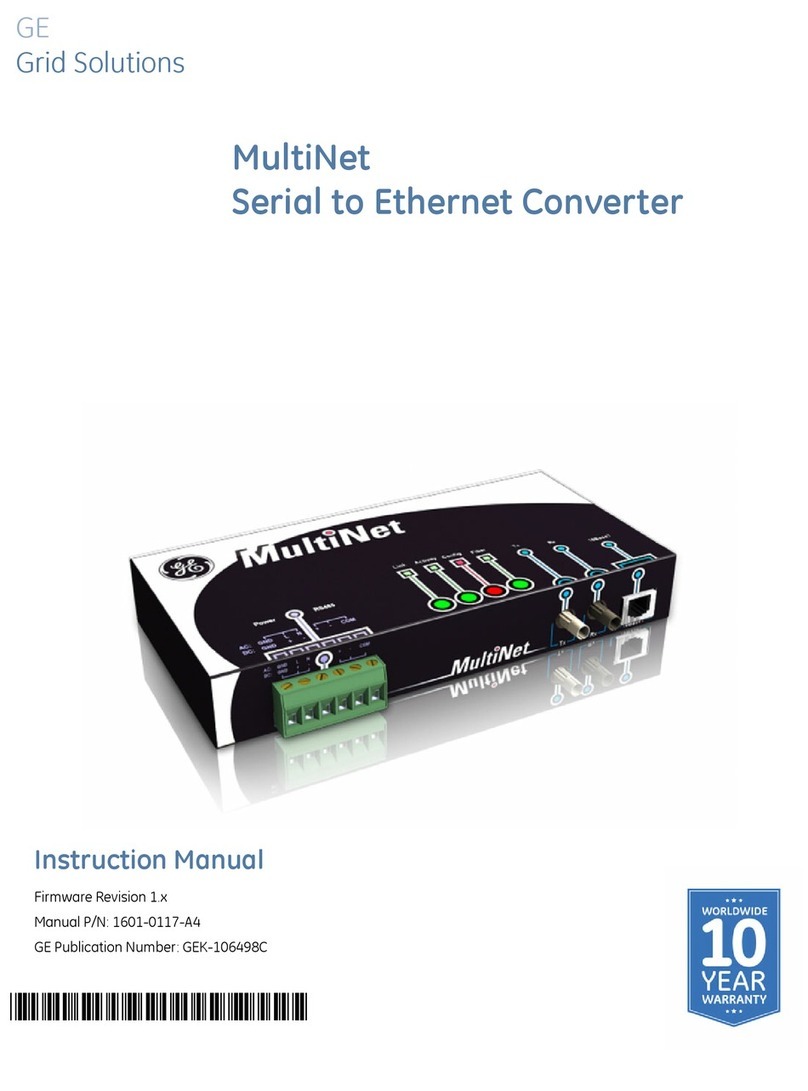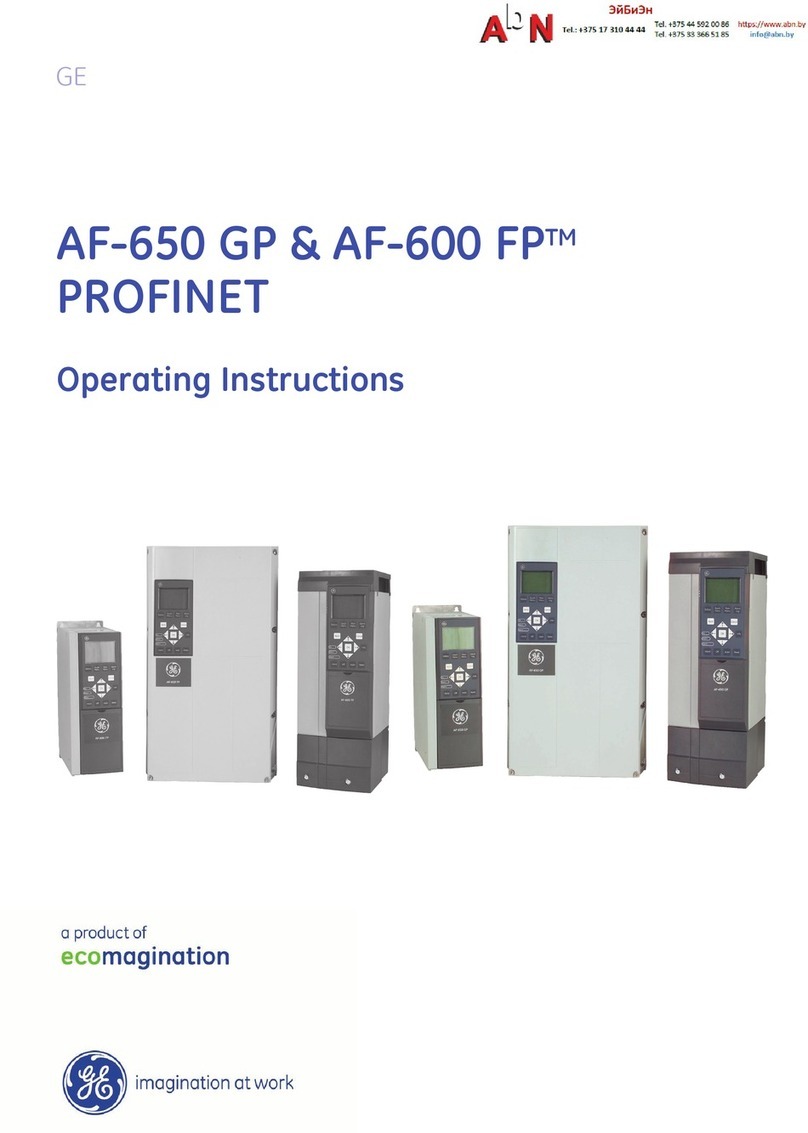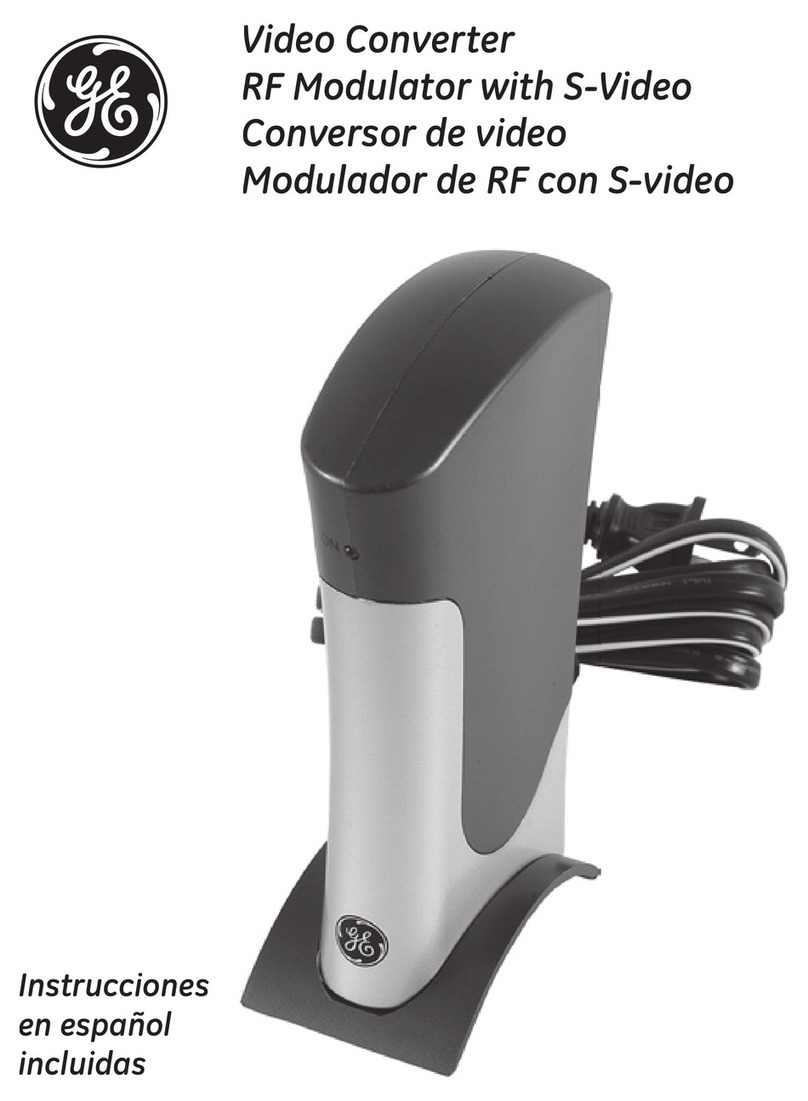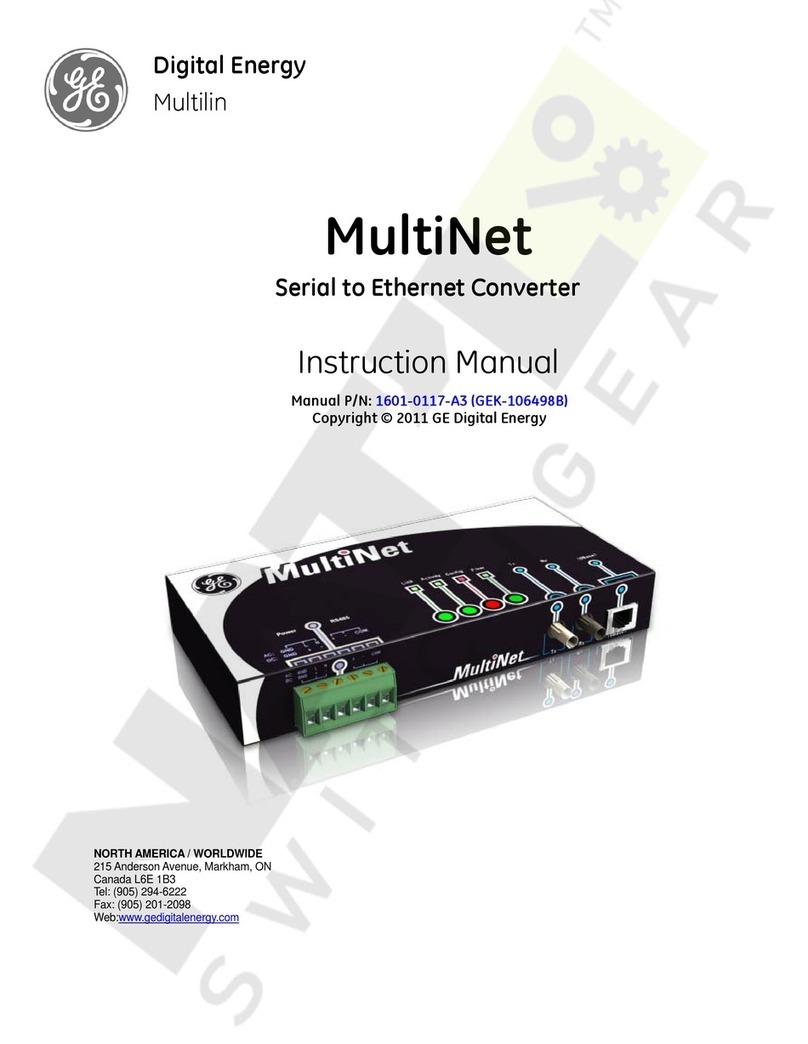HANDLING OF ELECTRONIC EQUIPMENT
A person’s normal movements can easily generate electrostatic potentials of several
thousand volts. Discharge of these voltages into semiconductor devices when handling
circuits can cause serious damage, which often may not be immediately apparent but the
reliability of the circuit will have been reduced.
The electronic circuits of GE Grid Solutions products are immune to the relevant
levels of electrostatic discharge when housed in their cases. Do not expose them to
the risk of damage by withdrawing modules unnecessarily.
Each module incorporates the highest practicable protection for its semiconductor devices.
However, if it becomes necessary to withdraw a module, the following precautions should be
taken to preserve the high reliability and long life for which the equipment has been designed
and manufactured.
1. Before removing a module, ensure that you are a same electrostatic potential as the
equipment by touching the case.
2. Handle the module by its front-plate, frame, or edges of the printed circuit board.
Avoid touching the electronic components, printed circuit track or connectors.
3. Do not pass the module to any person without first ensuring that you are both at the
same electrostatic potential. Shaking hands achieves equipotential.
4. Place the module on an anti-static surface, or on a conducting surface, which is at the
same potential as you.
5. Store or transport the module in a conductive bag.
More information on safe working procedures for all electronic equipment can be found in
BS5783 and IEC 60147-0F.
If you are making measurements on the internal electronic circuitry of equipment in service, it
is preferable that you are earthed to the case with a conductive wrist strap.
Wrist straps should have a resistance to ground between 500k –10M ohms. If a wrist strap
is not available you should maintain regular contact with the case to prevent the build up of
static. Instrumentation which may be used for making measurements should be earthed to
the case whenever possible.
GE Grid Solutions strongly recommends that detailed investigations on the electronic
circuitry, or modification work, be carried out in a Special Handling Area such as described in
BS5783 or IEC 60147-0F.












